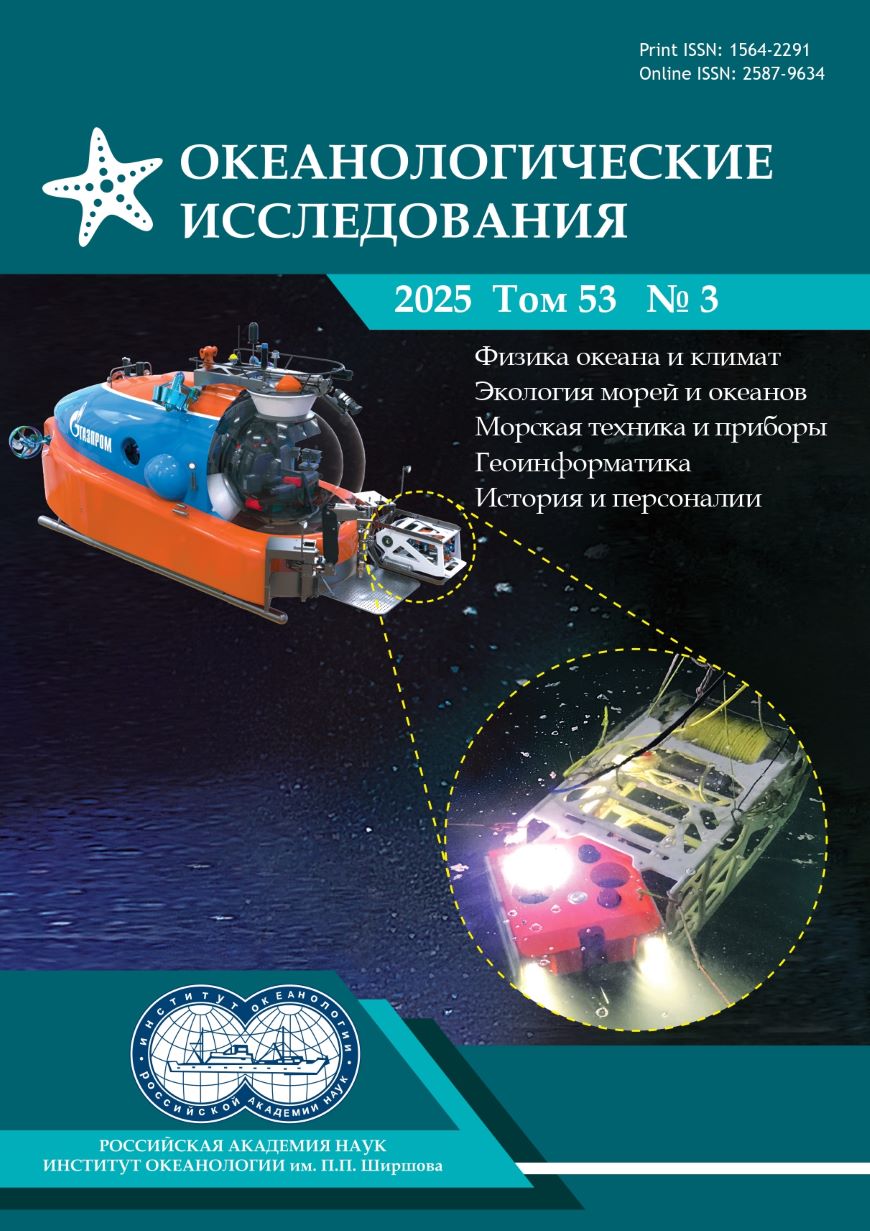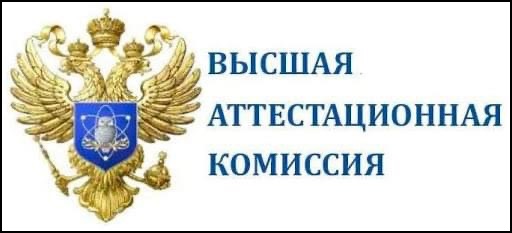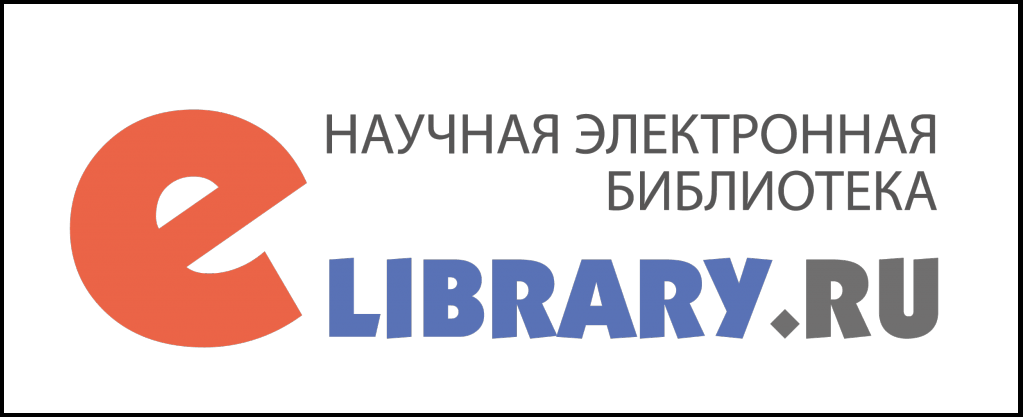ПРОГРАММНЫЙ КОМПЛЕКС ДЛЯ ОБРАБОТКИ АРХИВНЫХ ГИДРОЛОКАЦИОННЫХ ДАННЫХ
Аннотация
Настоящая статья посвящена процессу обработки архивных гидролокационных данных для исследований морского дна, который ведется в Институте океанологии им. П. П. Ширшова РАН (ИО РАН) уже на протяжении 50 лет. В работе подробно описывается алгоритм работы конвертера, позволяющего преобразовать данные из архивного формата ИО РАН WINRASTR в современный стандартный формат XTF. Это преобразование необходимо для унификации формата накопленных данных, что обеспечивает их более эффективную обработку и анализ. В статье также рассматривается алгоритм построения гидролокационных мозаик, которые являются одним из наиболее удобных способов представления больших объемов данных съемки поверхности дна. Данная работа направлена на повышение качества исследований морского дна и оптимизацию работы с архивными данными.
Литература
- Анисимов И. М., Залота А. К., Лесин А. В., Муравья В. О. Особенности исследования биологических и техногенных объектов с использованием глубоководных буксируемых аппаратов // Океанология. 2023. № 63 (5). C. 840–852. https://doi.org/10.31857/S0030157423050027.
- Запотылько В. С., Попов А. П., Свиридов С. А., Римский-Корсаков Н. А. ODBASE – система хранения и отображения данных морских исследований Института океанологии РАН // Океанологические исследования. 2024. № 52 (2). C. 206–233. https://doi.org/10.29006/1564-2291.JOR-2024.52(2).11.
- Римский-Корсаков Н. А., Тронза С. Н., Анисимов И. М. Развитие гидролокационных технологий глубоководных исследований рельефа дна и подводных объектов // Международный журнал прикладных и фундаментальных исследований. 2019. № 9. C. 85–90. https://doi.org/10.17513/mjpfi.12856.
- Римский-Корсаков Н. А., Тронза С. Н., Анисимов И. М. Архивирование гидролокационных данных океанологических исследований дна акваторий // Международный журнал прикладных и фундаментальных исследований. 2020. № 10. C. 47–53. https://doi.org/10.17513/mjpfi.13137.
- Римский-Корсаков Н. А. Структура технологии гидролокационных исследований дна и подводных объектов // Океанологические исследования. 2017. № 45 (1). C. 187–195. https://doi.org/10.29006/1564-2291.JOR-2017.45(1).14.
- Римский-Корсаков Н. А., Свиридов С. А., Руссак Ю. С., Костин А. Б., Тихонова Н. Ф. Разработка и эксплуатация глубоководного океанографического комплекса в составе буксируемых аппаратов «Звук» // Океанологические исследования. 2023. № 51 (1). C. 133–161. https://doi.org/10.29006/1564-2291.JOR-2023.51(1).7.
- Римский-Корсаков Н. А., Книвель Н. Я., Флинт М. В., Казеннов А. Ю., Кикнадзе О. Е., Анисимов И. М., Тихонова Н. Ф. Технологии и результаты исследований объектов, представляющих экологическую угрозу, в Новоземельской впадине // Океанологические исследования. 2024. № 52 (3). C. 133–148. https://doi.org/10.29006/1564-2291.JOR-2024.52(3).8.
- Руссак Ю. С., Римский-Корсаков Н. А. Цифровой модуль ввода–вывода гидролокационной информации RAD98. М., 1998. C. 114.
- Сивинцев Ю. В., Вакуловский С. М., Васильев А. П. Техногенные радионуклиды в морях, омывающих Россию: Радиоэкологические последствия удаления радиоактивных отходов в арктические и дальневосточные моря («Белая книга-2000») / Ю. В. Сивинцев, С. М. Вакуловский, А. П. Васильев, М., 2005. 624 c.
- Фирсов Ю. Г. Основы гидроакустики и использования гидрографических сонаров / Ю. Г. Фирсов, Санкт-Петербург: Нестор-История, 2010. 348 c.
- Юркина М. И., Серебрякова Л. И. Действующие Системы Координат В России // Известия высших учебных заведений. Геодезия и аэрофотосъемка. 2001. № 3. C. 40–53.
- Cervenka P., Moustier C. de Sidescan sonar image processing techniques // IEEE Journal of Oceanic Engineering. 1993. Vol. 18. № 2. P. 108–122. https://doi.org/10.1109/48.219531.
- Chesapeake Technology // Makers of SonarWiz [Электронный ресурс]. https://chesapeaketech.com/.(дата обращения: 06.04.2025).
- DeepVision // Sonar Systems [Электронный ресурс]. https://deepvision.se/.(дата обращения: 06.04.2025).
- HYPACK Hydrographic Surveying Packages // Xylem US [Электронный ресурс]. https://www.xylem.com/en-us/brands/hypack/?redirect=hypack.(дата обращения: 06.04.2025).
- Kumar M. World geodetic system 1984: A modern and accurate global reference frame // Marine Geodesy. 1988. No. 2 (12). P. 117–126. https://doi.org/10.1080/15210608809379580.
- MB-System // MBARI [Электронный ресурс]. https://www.mbari.org/technology/mb-system/.(дата обращения: 06.04.2025).
- Moga Software [Электронный ресурс]. https://www.mogasw.com/seaview/mosaic/.(дата обращения: 12.04.2025).
- Pyproj 3.7.1 documentation [Электронный ресурс]. https://pyproj4.github.io/pyproj/stable/.(дата обращения: 11.04.2025).
- Ritter N., Ruth M. The GeoTiff data interchange standard for raster geographic images // International Journal of Remote Sensing. 1997. No. 7 (18). P. 1637–1647. https://doi.org/10.1080/014311697218340.
- SonarTRX Introduction // Leraand Engineering Inc. [Электронный ресурс]. https://www.sonartrx.com/.(дата обращения: 06.04.2025).
- XTF file format information // Exail [Электронный ресурс]. https://www.exail.com/resources/knowledge-center/xtf-file-format-information.(дата обращения: 12.04.2025).
Передача авторских прав происходит на основании лицензионного договора между Автором и Федеральным государственным бюджетным учреждением науки Институт океанологии им. П.П. Ширшова Российской академии наук (ИО РАН)












